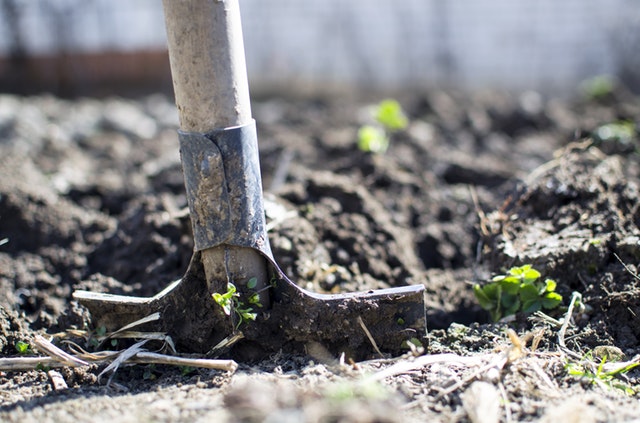Return To Blog
Planting With Clay Soil From Your Denver Sprinkler Service Experts
August 23, 2017
Denver soil is known to be a bit tricky to work with, especially for newcomers to the state of Colorado. Our state sees every type of seasonal weather, including dry heat, flooding, freezing - you name it. The state’s high elevation make it prone to high intensity sunlight and low humidity. Fluctuating temperatures and low humidity along with Colorado’s clay soil makes for a very temperamental lawn environment. Colorado literally translates into “color red†for the red rock and clay found throughout the state. Planting and gardening can be fickle when working with clay soil, but your Denver service experts are here to help you every step of the way!
The negatives of Colorado’s red clay soil can seem daunting if you’re not used to this type of landscape. Because of clay soil being so dense and retains a lot of moisture, it is very slow draining and can be slow to warm up when springtime rolls around. There’s also a tendency to have alkaline in the soil. Also, clay soil compacts easily which isn’t the best news when you’re trying to grow plants. Compacted soil makes it difficult for plants to grow deep roots. Read more about understanding and improving your clay soil.
Second, fill up your hole with the same type of soil that you dug out to avoid drastic environmental changes for the plant. Third, do not fill the bottom of the hole up with gravel as doing so makes it more likely your plant won’t make it until next season. After your plant is in the ground, remember that the soil in the hole is loose and will hold more water than the surrounding area so it’s best to be very careful when watering. If you can, plant your plants early in the season so the plants can adjust to their new surroundings before the cold and freezing weather takes place in late fall.
Working with clay soil can be tricky, but you can count on the experts at Water Solutions Sprinkler Service to help! After all, your soil is the best ally for your Denver sprinkler system! We have over two decades of experience installing sprinkler systems across the state. Contact us today for a free estimate for sprinkler installation and other sprinkler and landscaping services in the Denver metro area!
Positives and Negatives of Clay Soil
Clay soil can get a bad rep for growing plants and vegetation, but it does have good qualities! Clay soil is dense, which means that it can retain moisture well and is more nutrient rich than other types of soil. The particles that make up clay soil are negatively charged and attract positively charged particles making the soil packed with nutrients!The negatives of Colorado’s red clay soil can seem daunting if you’re not used to this type of landscape. Because of clay soil being so dense and retains a lot of moisture, it is very slow draining and can be slow to warm up when springtime rolls around. There’s also a tendency to have alkaline in the soil. Also, clay soil compacts easily which isn’t the best news when you’re trying to grow plants. Compacted soil makes it difficult for plants to grow deep roots. Read more about understanding and improving your clay soil.
Planting Tips for Clay Soil
First thing’s first: examine your plants before you plant them! You’ll want to make sure that your plant sits about 1-3 inches above soil level and dig a hole just deep enough so you can ensure your plant won’t sink lower in the ground. Your plant’s hole should be at least twice as wide as the width of your root’s flare, and shape the hole so it gets gradually shallow on the edges like a large bowl.Second, fill up your hole with the same type of soil that you dug out to avoid drastic environmental changes for the plant. Third, do not fill the bottom of the hole up with gravel as doing so makes it more likely your plant won’t make it until next season. After your plant is in the ground, remember that the soil in the hole is loose and will hold more water than the surrounding area so it’s best to be very careful when watering. If you can, plant your plants early in the season so the plants can adjust to their new surroundings before the cold and freezing weather takes place in late fall.
Working with clay soil can be tricky, but you can count on the experts at Water Solutions Sprinkler Service to help! After all, your soil is the best ally for your Denver sprinkler system! We have over two decades of experience installing sprinkler systems across the state. Contact us today for a free estimate for sprinkler installation and other sprinkler and landscaping services in the Denver metro area!
